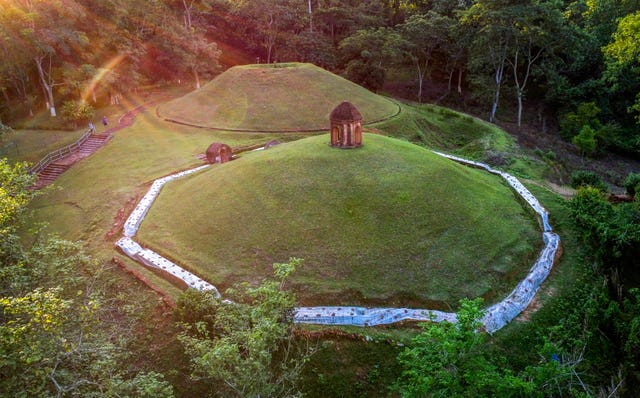Indian royal burial mounds announced as latest World Heritage Site
Unesco experts announced the decision in the capital New Delhi.

The Charaideo Moidam royal burial complex and shrines in India have been named as a new World Heritage Site by the United Nations cultural agency.
Unesco experts, who are deliberating on a list of sites nominated for the World Heritage Site tag, announced the decision in Indian capital New Delhi, where they are holding their 46th session.
The Charaideo Moidams, built by north-east India’s Ahom dynasty in Assam state, are a mound burial system that served as a resting place for Ahom kings and queens. They were constructed by providing an earth cover over a hollow vault made of bricks, stone or earth.

“The moidams are an exceptional example of an Ahom necropolis that represents funeral traditions and associated beliefs in a tangible way,” it added.
The Ahom clan established their capital in different parts of the Brahmaputra River Valley between the 12th and 18th centuries, after migrating from China, according to the UN cultural agency’s website.
They established the first capital at the Patkai hills in eastern India and named it Charaideo, which means “a dazzling city above the mountain”.

The site has the largest concentration of these vaulted mound burials, according to Unesco, and reflects the sculpted landscape of the surrounding hills.
India is home to 43 World Heritage Sites.
Other sites named on Friday include the Colonies of the Moravian Church in Germany, the US and UK; the Umm Al-Jimal in Jordan; and the Badain Jaran Desert in China.
The committee also inscribed the Monastery of Saint Hilarion, in the archaeological site of Tell Umm Amer in the Gaza Strip, on both the World Heritage List and the List of World Heritage in Danger.
It said the decision recognised the site’s value and the need to protect it given threats posed by the conflict in the Gaza Strip.





